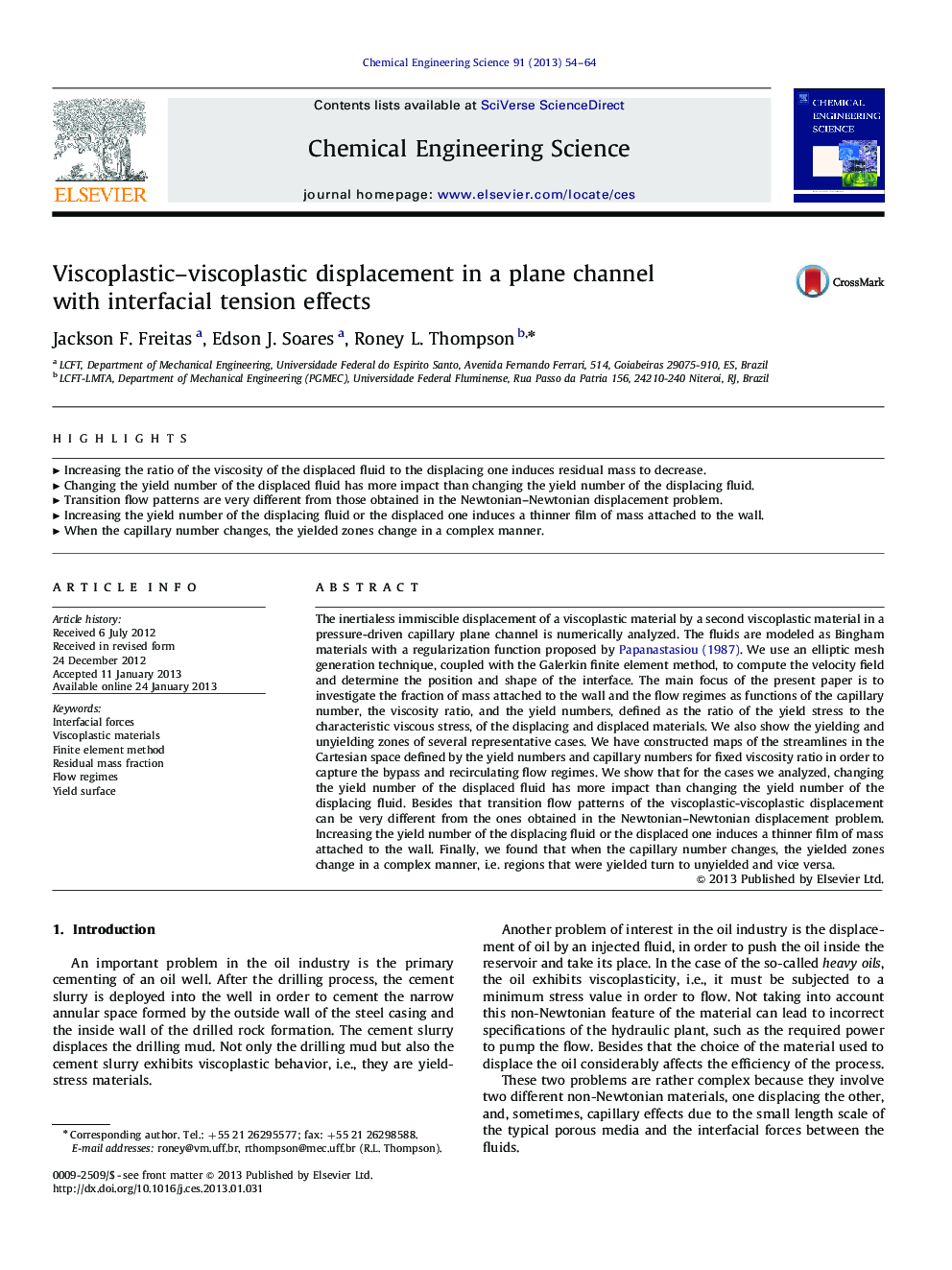| کد مقاله | کد نشریه | سال انتشار | مقاله انگلیسی | نسخه تمام متن |
|---|---|---|---|---|
| 155258 | 456888 | 2013 | 11 صفحه PDF | دانلود رایگان |

The inertialess immiscible displacement of a viscoplastic material by a second viscoplastic material in a pressure-driven capillary plane channel is numerically analyzed. The fluids are modeled as Bingham materials with a regularization function proposed by Papanastasiou (1987). We use an elliptic mesh generation technique, coupled with the Galerkin finite element method, to compute the velocity field and determine the position and shape of the interface. The main focus of the present paper is to investigate the fraction of mass attached to the wall and the flow regimes as functions of the capillary number, the viscosity ratio, and the yield numbers, defined as the ratio of the yield stress to the characteristic viscous stress, of the displacing and displaced materials. We also show the yielding and unyielding zones of several representative cases. We have constructed maps of the streamlines in the Cartesian space defined by the yield numbers and capillary numbers for fixed viscosity ratio in order to capture the bypass and recirculating flow regimes. We show that for the cases we analyzed, changing the yield number of the displaced fluid has more impact than changing the yield number of the displacing fluid. Besides that transition flow patterns of the viscoplastic-viscoplastic displacement can be very different from the ones obtained in the Newtonian–Newtonian displacement problem. Increasing the yield number of the displacing fluid or the displaced one induces a thinner film of mass attached to the wall. Finally, we found that when the capillary number changes, the yielded zones change in a complex manner, i.e. regions that were yielded turn to unyielded and vice versa.
► Increasing the ratio of the viscosity of the displaced fluid to the displacing one induces residual mass to decrease.
► Changing the yield number of the displaced fluid has more impact than changing the yield number of the displacing fluid.
► Transition flow patterns are very different from those obtained in the Newtonian–Newtonian displacement problem.
► Increasing the yield number of the displacing fluid or the displaced one induces a thinner film of mass attached to the wall.
► When the capillary number changes, the yielded zones change in a complex manner.
Journal: Chemical Engineering Science - Volume 91, 22 March 2013, Pages 54–64